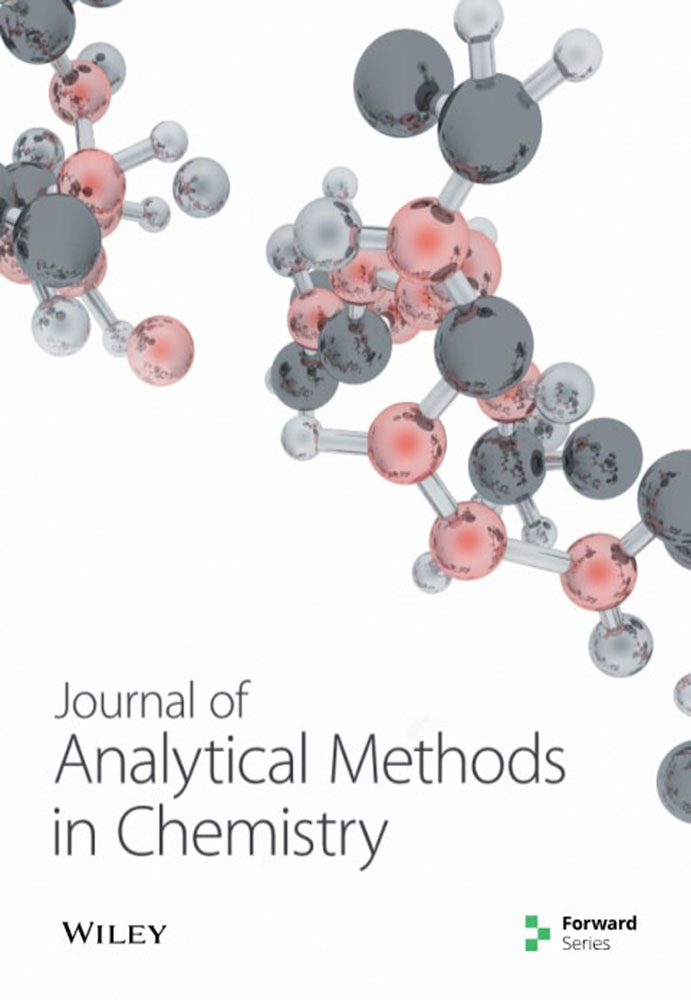Development and Validation of Analytical Procedure for Elemental Impurities in Rosuvastatin Calcium Tablets by ICP-MS and Microwave Digestion
IF 2.2
3区 化学
Q3 CHEMISTRY, ANALYTICAL
引用次数: 0
Abstract
Rosuvastatin calcium is a widely used 3-hydroxy-3-methylglutaryl coenzyme A-reductase inhibitor developed for the treatment of dyslipidemia. To establish a control strategy for the elemental impurities, a new digestion method combined with an inductively coupled plasma-mass spectrometer (ICP-MS) was developed and validated by our team to determine elements Cd, Pb, As, Hg, Co, V, and Ni in rosuvastatin calcium tablets, which digest the sample perfectly even in the presence of a large number of excipients, especially titanium dioxide. The measurement mode was collision cell mode with kinetic energy discrimination (KED). 209Bi+, 115In+, and 89Y+ were chosen as internal standard elements. The recoveries of the limit of quantitation (LOQ) ranged from 90.5% to 106.4%, concentrations of the abovementioned elements in LOQ were 0.25 µg·L−1, 0.25 µg·L−1, 0.75 µg·L−1, 1.5 µg·L−1, 2.5 µg·L−1, 5 µg·L−1, and 8 µg·L−1 , respectively, linear correlation coefficients were above 0.9997, the recoveries in accuracy item ranged from 91.8% to 103.6%, and relative standard deviations (RSDs) of recovery in precision were not more than 1.8%, reflecting a reliable method of high sensitivity, strong anti-interference capacity, and good precision, and that it was suitable for the determination of elemental impurities in drugs.利用 ICP-MS 和微波消解法开发和验证瑞舒伐他汀钙片中元素杂质的分析程序
瑞舒伐他汀钙是一种广泛使用的 3-羟基-3-甲基戊二酰辅酶 A 还原酶抑制剂,用于治疗血脂异常。为了建立元素杂质的控制策略,我们的团队开发了一种新的消解方法,并结合电感耦合等离子体质谱仪(ICP-MS)进行了验证,以测定罗苏伐他汀钙片中的镉、铅、砷、汞、钴、钒和镍元素。测量模式为具有动能辨别(KED)的碰撞池模式。选择 209Bi+、115In+ 和 89Y+ 作为内标元素。定量限(LOQ)的回收率为 90.5% 至 106.4%,LOQ 中上述元素的浓度分别为 0.25 µg-L-1、0.25 µg-L-1、0.75 µg-L-1、1.5 µg-L-1、2.5 µg-L-1、5 µg-L-1 和 8 µg-L-1,线性相关系数均大于 0.9997,准确度项目的回收率为91.8%~103.6%,精密度项目的回收率相对标准偏差不大于1.8%,表明该方法灵敏度高、抗干扰能力强、精密度好,适用于药物中元素杂质的测定。
本文章由计算机程序翻译,如有差异,请以英文原文为准。
求助全文
约1分钟内获得全文
求助全文
来源期刊

Journal of Analytical Methods in Chemistry
CHEMISTRY, ANALYTICAL-ENGINEERING, CIVIL
CiteScore
4.80
自引率
3.80%
发文量
79
审稿时长
6-12 weeks
期刊介绍:
Journal of Analytical Methods in Chemistry publishes papers reporting methods and instrumentation for chemical analysis, and their application to real-world problems. Articles may be either practical or theoretical.
Subject areas include (but are by no means limited to):
Separation
Spectroscopy
Mass spectrometry
Chromatography
Analytical Sample Preparation
Electrochemical analysis
Hyphenated techniques
Data processing
As well as original research, Journal of Analytical Methods in Chemistry also publishes focused review articles that examine the state of the art, identify emerging trends, and suggest future directions for developing fields.
 求助内容:
求助内容: 应助结果提醒方式:
应助结果提醒方式:


